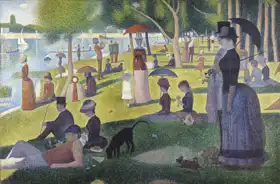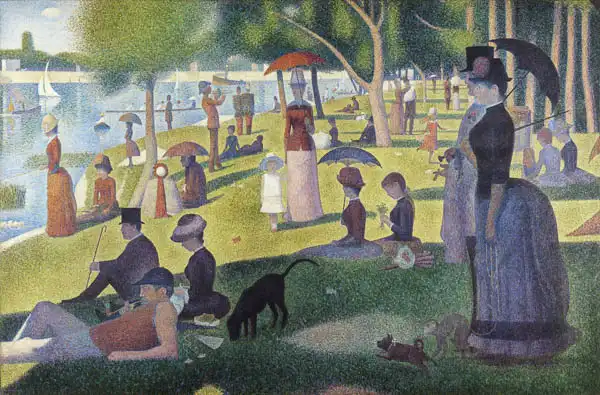About this finishing
Print. The image is printed on the top quality 10-ink HP Z9PS printer on HP matte 270 g / m2 paper. You can choose any size to an accuracy of 1 cm. A margin of 5 cm around the image is added to the size of the motif.


You can find a detailed description about our finishings
here.
Sunday Afternoon on the Island Grande Jatte
Date:
1884Medium:
oil on canvasLocation:
Art Institute of Chicago, ChicagoDimensions:
207.5 x 308Sunday Afternoon on La Grande Jatte is by far the most famous French impressionist painting by George Seurat. Captures island cruise on the Seine, to which Parisian artists love to walk. Seurat painted this picture for a long time - two years - and gave him sixty preparatory studies.
Mocks him for individualized and rootless society (they all look ahead and speak together). The only one who had this middle-bourgeois elite looks at the viewer and expresses some emotion, a little girl in a white dress in the middle of the image. The image is static figures virtually breathe and are frosted. The only sign of movement is a small dog, six butterflies and girl running.
Seurat dealt with theories of color and optics and believed that color can bring to the image of harmony and emotion (as it can musicians - by the way, because the painting missing trumpet player). The image is painted with a technique called pointillism and is composed of a huge number of small points. This trend influenced many other artists (Paul Signac and Camille Pissarro).
Seurat painted picture Sunday Afternoon on the Island Grande Jatte in 1884. Prevailing color of this fine art print is vivid and its shape is landscape. Original size is 207.5 x 308. This art piece is located in Art Institute of Chicago, Chicago. This image is printed on demand - you can choose material, size and finishing.
Georges-Pierre Seurat (1859-1891). French
Postimpressionist - a pioneer of pointillism who changed the direction of modern art.
Sunday Afternoon is one of his most famous and recognized works. His first larger painting was the
Bath at Asnieres, which was rejected by the Salon. Seurat therefore decided to become an independent artist. He was interested in colour theory and optics and believed that, through colour, he could bring harmony and emotion to his paintings (just as musicians do).



